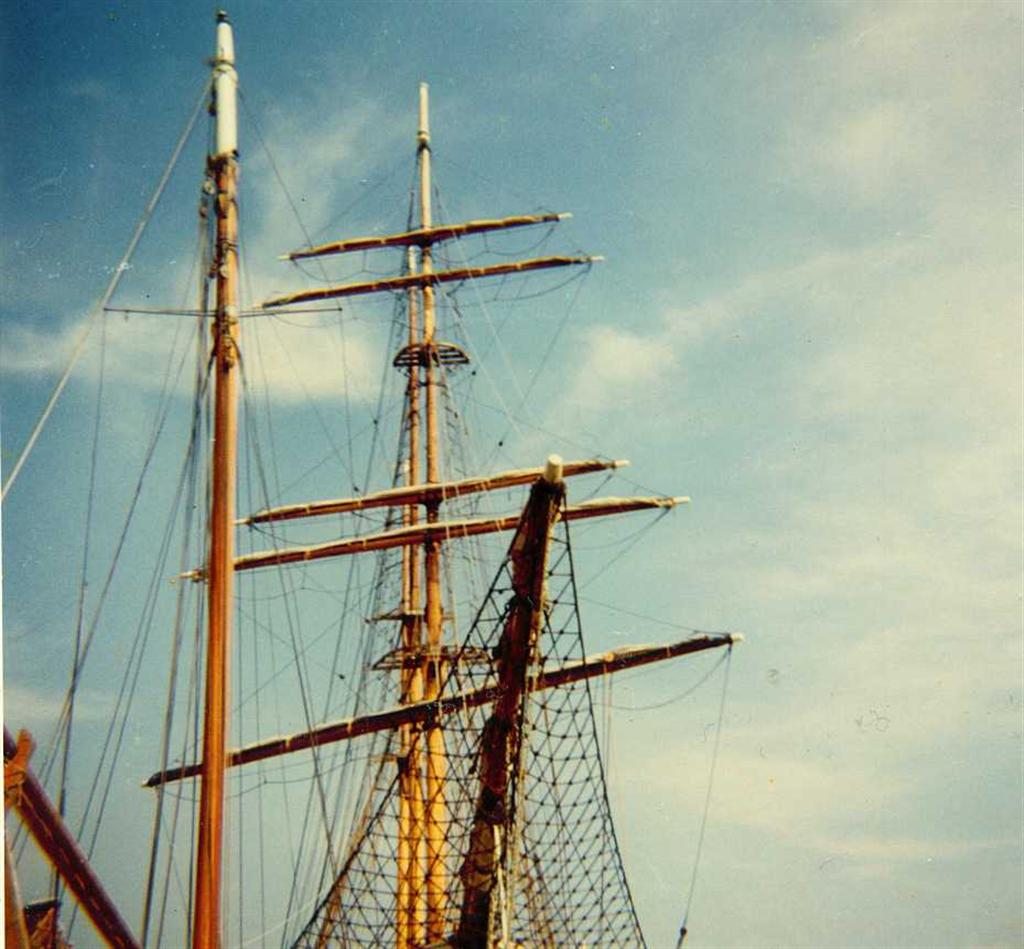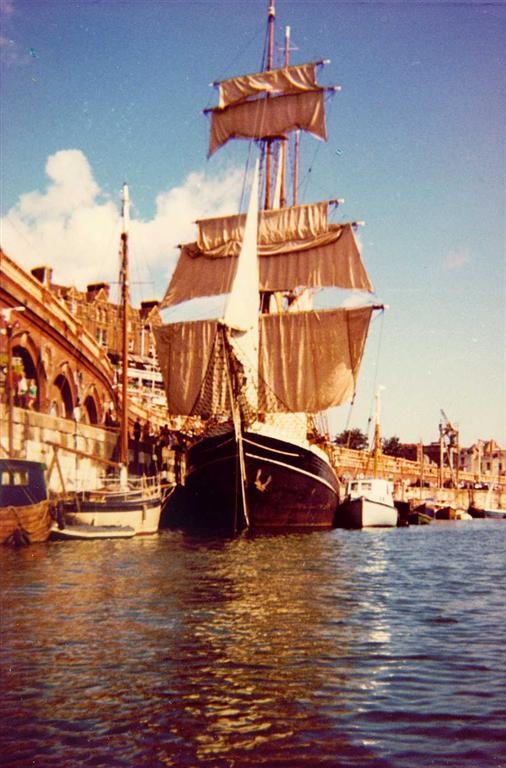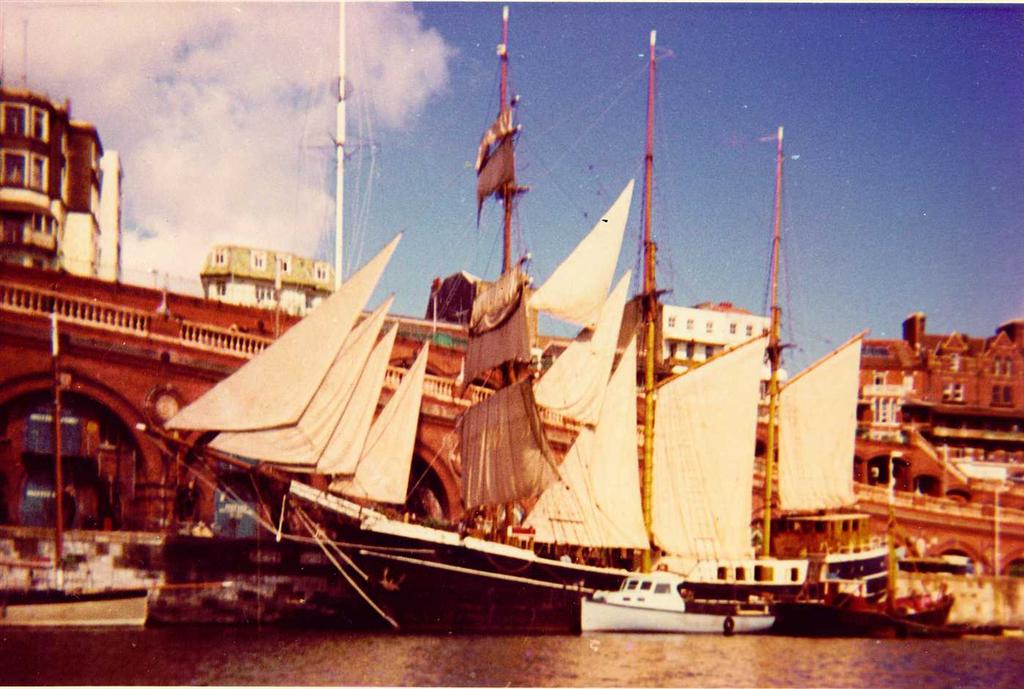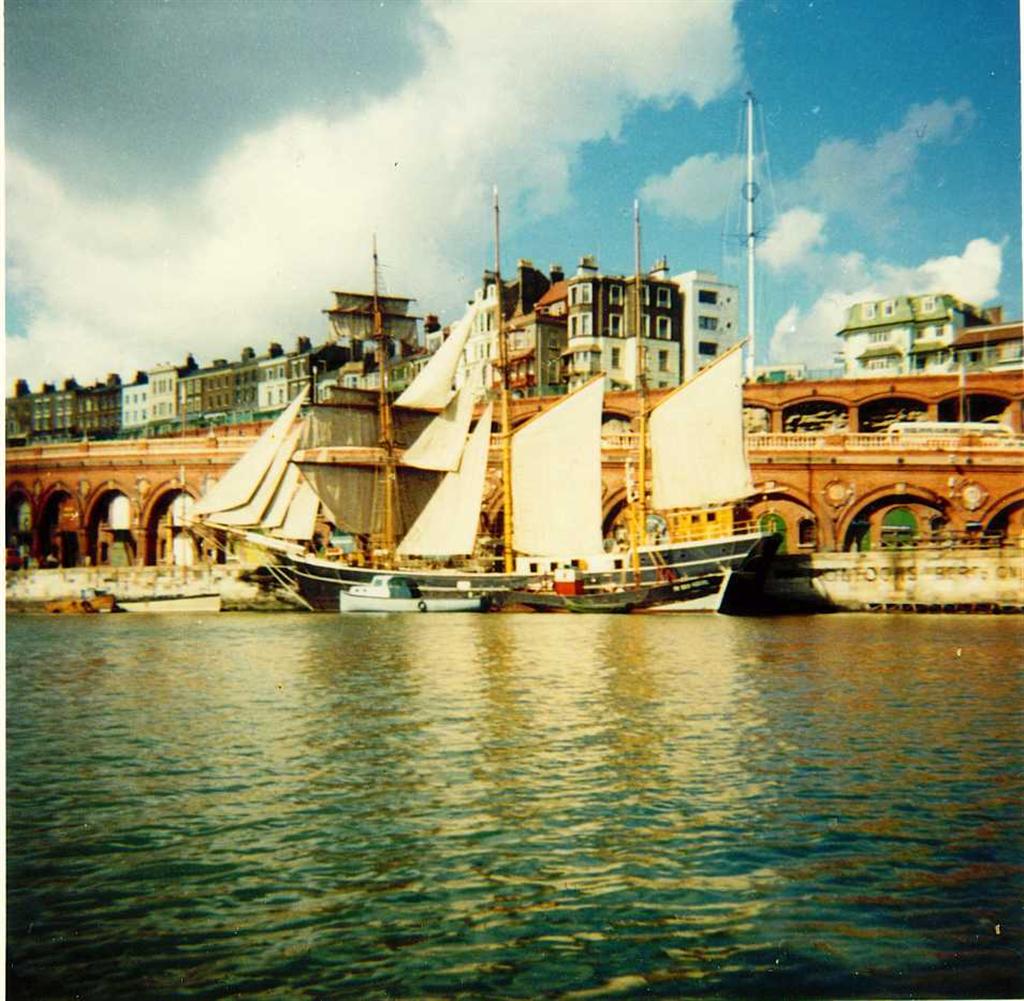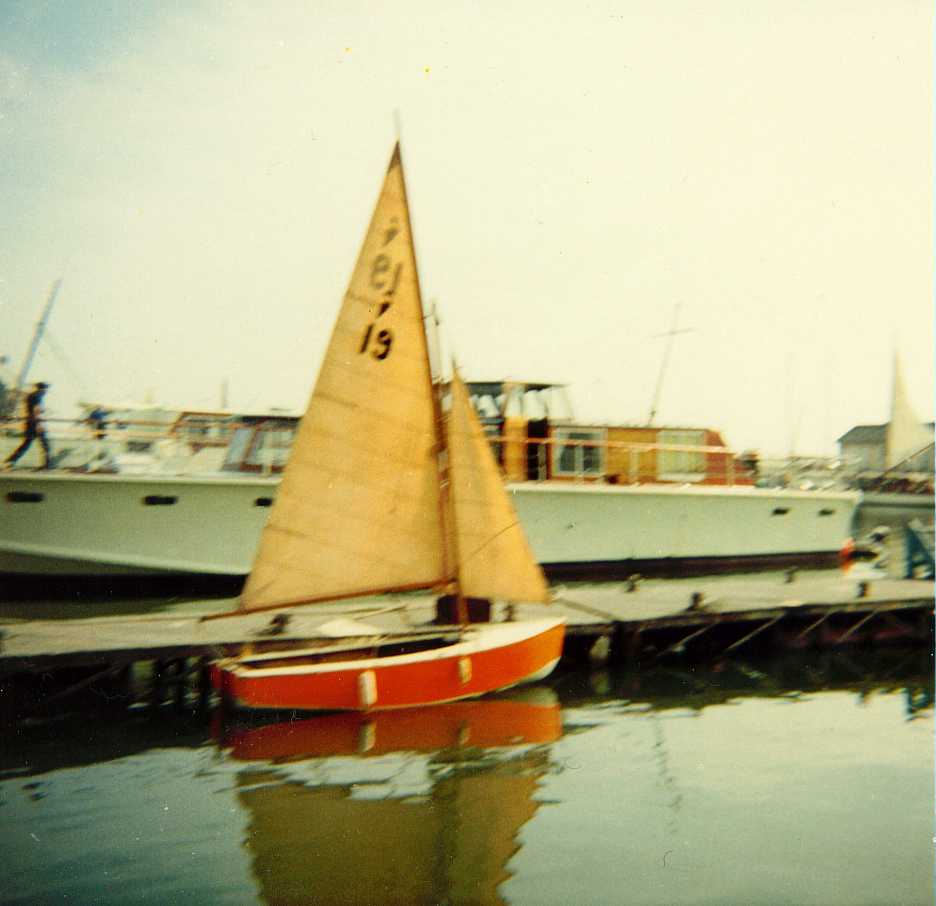Title 1 | Title 3 | Title 4 | Title 5 | Title 6 | Title 7 | odd photos of Ramsgate | midget town | Eastern Undercliff Ramsgate | Title 11 | Black Opal | Title 13 | Ellington Park 1971 | Broadstairs | Title 17 | Title 14 | Title 18 | Title 19 | Title 20 | panorama | Title 22 | Margate | Harbour Street
Black Opal
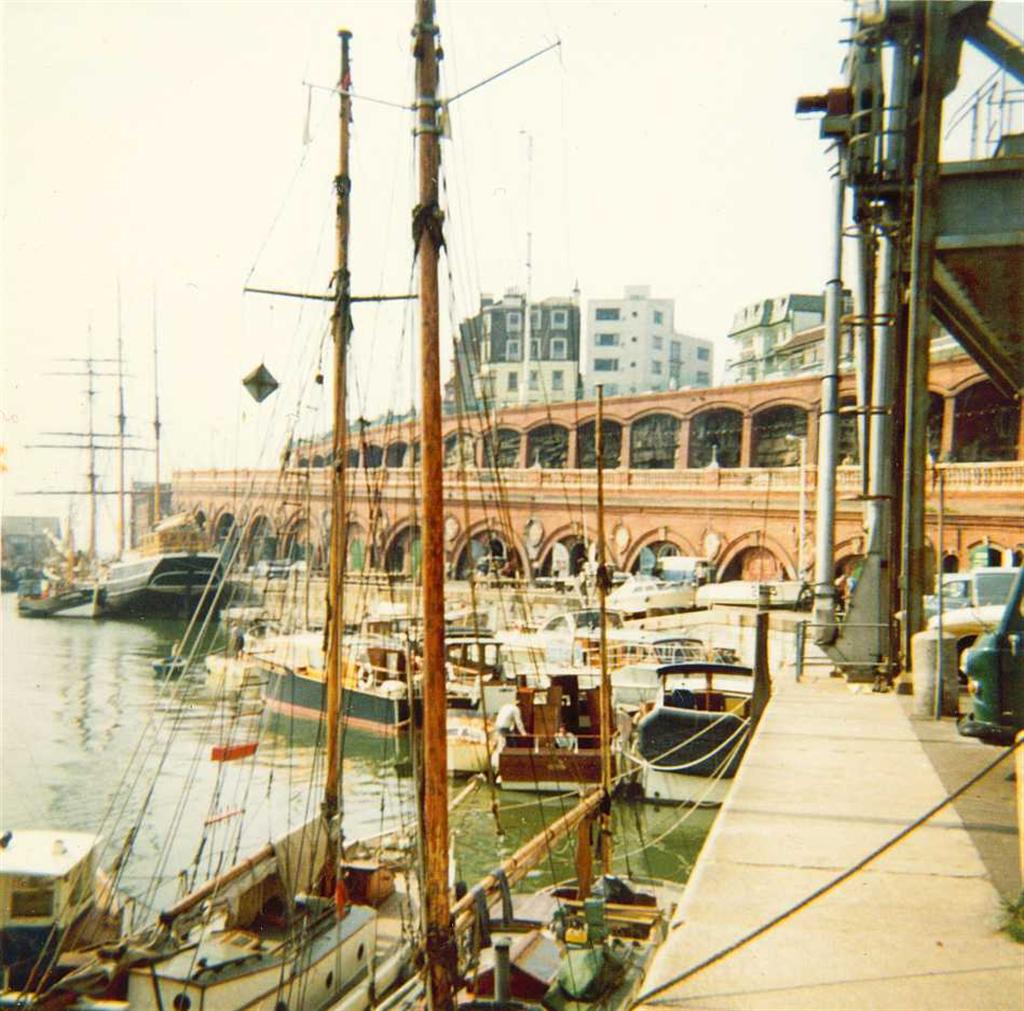
Some of you may remember the square rigged sailing ship that was in Ramsgate Harbour beside the brick arches from about 1968 to 1973 owned by an Australian opal mining company she was called the Black Opal.
I worked on her rigging and in her engine room during my school holidays in the late 60s and early 70s
I know she wasnít originally called the Black Opal and is now called the Black Pearl, has been pulled up out of the water and is used as a restaurant in Malta.
I looked on the restaurantís website and several others about her and a lot of the information on them I know is wrong, so I will put down what I can remember and perhaps others can add anything they can remember.
She was built I was told in the 1920s in one of the Scandinavian countries it think 112 feet long and 300 tons she was fitted with a 200 horse power 2 cylinder Bolinder engine with a variable pitch prop.
She was three masted, probably originally rigged as a topsail schooner, her masts had been cut off level with the deck at some time past, she was being used as a coaster in Jamaica when the mining company bought her, these slow running Diesel engines run well on rum which is cheap in that part of the world.
She was crewed by a group of young Australians and an older captain, Captain Keble I think. They flew from Australia to Jamaica where they picked her up and sailed to one of the Scandinavian countries, to buy the pine to make masts and spars.
When I first saw her she had the square cut pine on the deck, which we planed to eight sided the sixteen sided and so on until we were able to sand off to round masts and spars. The whole of the hull was empty and lined with oak to take dry cargoes, the only accommodation being under the wheelhouse where the portholes are in the pictures.
We removed the old engine because it was thought its exhaust would stain the new sails. It was under the accommodation we cut a hole in the engine room bulkhead, laid railway lines into the hold level with the engine bed, attached a chain block to the stump of the main mast and the engine and dragged it into the hold where it could be craned out. It was heavy, the flywheel alone weighed three tons, no one wanted to buy this dated marine engine it lay on the quay for a bit and was eventually sold to the scrap merchant for £50.
The hold was ballasted with fitted water tanks and shingle beneath a deck over which accommodation was built, two deck houses were also built over the cargo hatches.
The making of the masts and all the rigging was done by Wally the rigger, who taught us unskilled young people how to rig a square rigged ship from nothing at all.
Eventually the opal mining company went bust, probably largely due to financing the Black Opal and I believe a film company bought her eventually.
Knowing the limitations of my camera at the time I think I must have taken the pictures from our dingy, one of the pictures says Ramsgate 1971 on the back in one of my brothers hand writing he was 15 and I was 18 at the time, you have to have a certain understanding of things nautical to fully appreciate what owning Heron number 19 meant in 1971.
